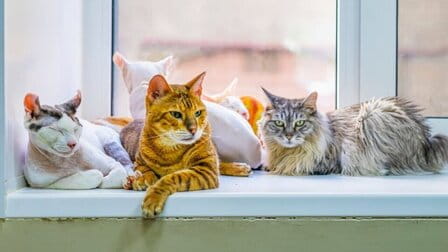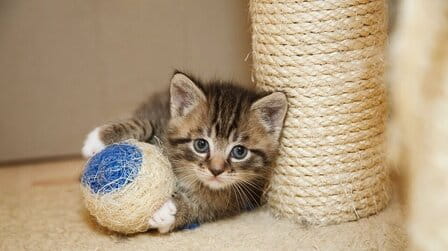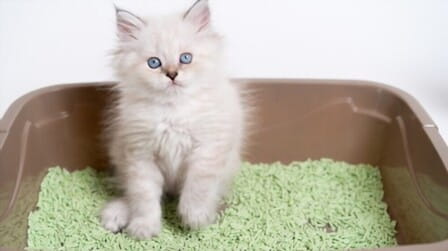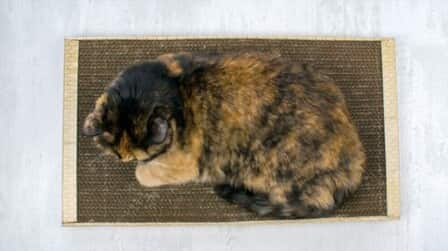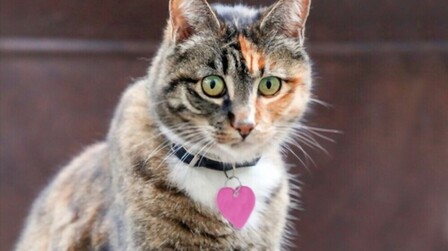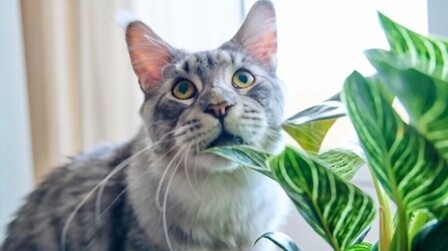We have long believed that cats have excellent night vision because they are notorious night owls. Use our guide to learn everything there is to know about cat night vision. It seems that cats hunt better at night. Many cat owners are used to having many hyperactive cats running around the house in the early hours of the morning or being woken up with small gifts, such as a mouse or even a sock. You may be shocked to learn that cats are actually crepuscular. Many people believe that cats are nocturnal and therefore can see well in the dark. Therefore, they tend to be more active at dawn and dusk. So, if they’re not actually nocturnal, how cats see in the dark.

How Cats See In The Dark
Do cats have night vision?
Although it is often rumored that cats are equipped with a set of night vision devices, they actually need some light to see. They require only one-sixth of the light that humans need and can see in extremely low light. The cat will just not be able to see at night in an extremely rare situation where almost all light is obscured, but on all night time excursions, your cat's eyesight should be much more than humans.
Their eyes are intelligently created
According to Catster, cats' superior night vision is a result of the intelligent structure of their eyes. They have a large lens and a curved cornea, and in dim light, their pupils can widen into a circle to capture as much light as possible.
In addition, cat eyes have entirely distinct photoreceptors than human eyes. Humans have more cones, which improve their ability to detect colors and daylight, compared to cats, who have more rods, which are accountable for nighttime, peripheral vision, and motion sensors.
Cats can see well in dim light thanks to the large number of rods and cones in their eyes, but they are less sensitive to strong light than humans are.
The tapetum, a reflective layer of tissue that reflects light to the retina, is another feature that distinguishes cats from other animals. By reflecting light to the receptor neurons inside this layer or reflective tissue, the retina can absorb and more than 50% of the light can reach. Plus, whether you're photographing your cat with a flash or photographing the reflection of its eyes in the headlights, the tapetum is what makes your cat's eyes appear to sparkle
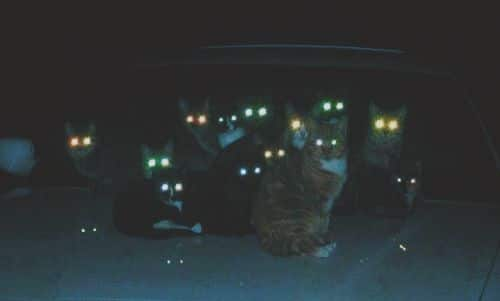
Their eyes will dilate to let more light in.
You may have often pondered why your cat's eyes are largely a vertical straight line during the day and then enlarge at night or during fun moments. This is because having vertical slits in their pupils permits them to concentrate because different parts of the eye can receive different amounts of light.
In 2015, a University of California study discovered that a cat's attractive saucer-shaped pupils actually allow more light to enter the eye. They see in low-light conditions, but their eyesight becomes blurry as a result. Cats can also change between 135 and 300 times, although humans only vary by 15 times in the same region. This means that compared to humans, cats' eyes can adjust to a larger range of light levels.

Cats can see in close-up.
Although cats' night vision is undoubtedly superior to ours, they also have poor distance vision due to their nearsightedness. Humans need to be up to five times farther away than a cat would be in order to see anything as clearly. Cats have a larger range of vision (200 degrees) than humans do, giving them stronger peripheral vision while having far blurrier eyesight. They are also more adept in detecting minute changes in light and motion, such as the tiny shadow of a mouse running.
How felines view the world
You might wonder how your feline buddy actually perceives the world now that you are aware of the mechanisms underlying cats' exceptional night vision. Fortunately, in 2013 painter Nickolay Lamm created a collection of photographs to show how cat vision differs from that of humans.
It's interesting to note from the photographs that although cats have much greater peripheral vision than humans do, they appear to have restricted color vision, seeing primarily in blue and green tones while becoming confused by red and pink. Furthermore, colors are significantly less richly saturated and seem than how humans perceive the environment.
The question of whether cats can sight in the dark is now answered. Cats have extremely intelligent eyes, which contribute to the fact that cats are such great hunters, even if their night vision isn't as strong as most people think it is.

Seeing ultraviolet light
Cats can perceive black light while humans cannot. Cats can arrange vision in the dark. Since ultraviolet light, sometimes called black light, is visible to humans, a room that is fully illuminated by ultraviolet light will appear completely dark to us. This is because UV rays are blocked by the lens of the human eye. Most other mammals, such as dogs, cats, and monkeys, lack lenses for UV light to pass through. A cat or even other predators will find this superpower beneficial as it will make it easier to follow a glowing urine trail or detect camouflaged prey.
Trading light for color
Red and green are less visible to cats than blue and yellow. They are unable to concentrate or be as detached as humans. The retina's abundance of rods makes it light-sensitive, but it also leaves less room again for cones. The cones in the eye sense color. The peak color sensitivity of cats is different from that of humans, despite some scientists' theories to the contrary. Red, green, and blue are the human color peaks.
Cats mostly perceive the environment in blue-violet, green-yellow, & gray tones, which are less saturated. Beyond 20 feet, where a nearsighted individual may see things, it also dims. While humans are 10–12 times better at following movement in bright light than animals, both dogs and cats can detect changes better than you at night. The luce tum tapetum, which aids cats and dogs in night vision, actually impairs eyesight during the day by flooding the retinal with light.

Another way Cats see in the dark
A cat uses additional senses, such as an echo, to help it navigate in the dark. Gloves can't see properly when you shut your eyes because cats lack the muscle necessary to alter the curvature of the eye's lens. She uses vibrations to create a four map of her environs by sensing minute vibrations. A cat's prey can be too nearby to be properly spotted when it is within assault range. In order to monitor movement, the cat's channel pulls forward and creates a kind of lattice.
Cats also use their senses to navigate the map. Humans and cats both have the same ability to hear at low frequencies. Dogs can hear octaves better than cats, they can hear sounds as high as 64 GHz. To determine the source of sound.
Scent is another sense cats use to navigate their surroundings. Compared with humans, cats have twice the number of receptors in their former sensory or nasal epithelium. On the foam mattress, cats also have olfactory organs that help them detect chemical scents. Finally, a cat's senses work together to aid in hunting.

Conclusion
Cats have superb night vision thanks to their mix of eyesight and other senses, which makes them the ideal late-night predators. If you own a cat, you might enjoy the delightful experience of being startled up at night by your cat slamming furniture or howling at an unknown monster outside the window. Although it may occasionally make you uncomfortable, the cat's nighttime antics are also rather adorable. However, it is a good idea to remember that cats have excellent night vision.



